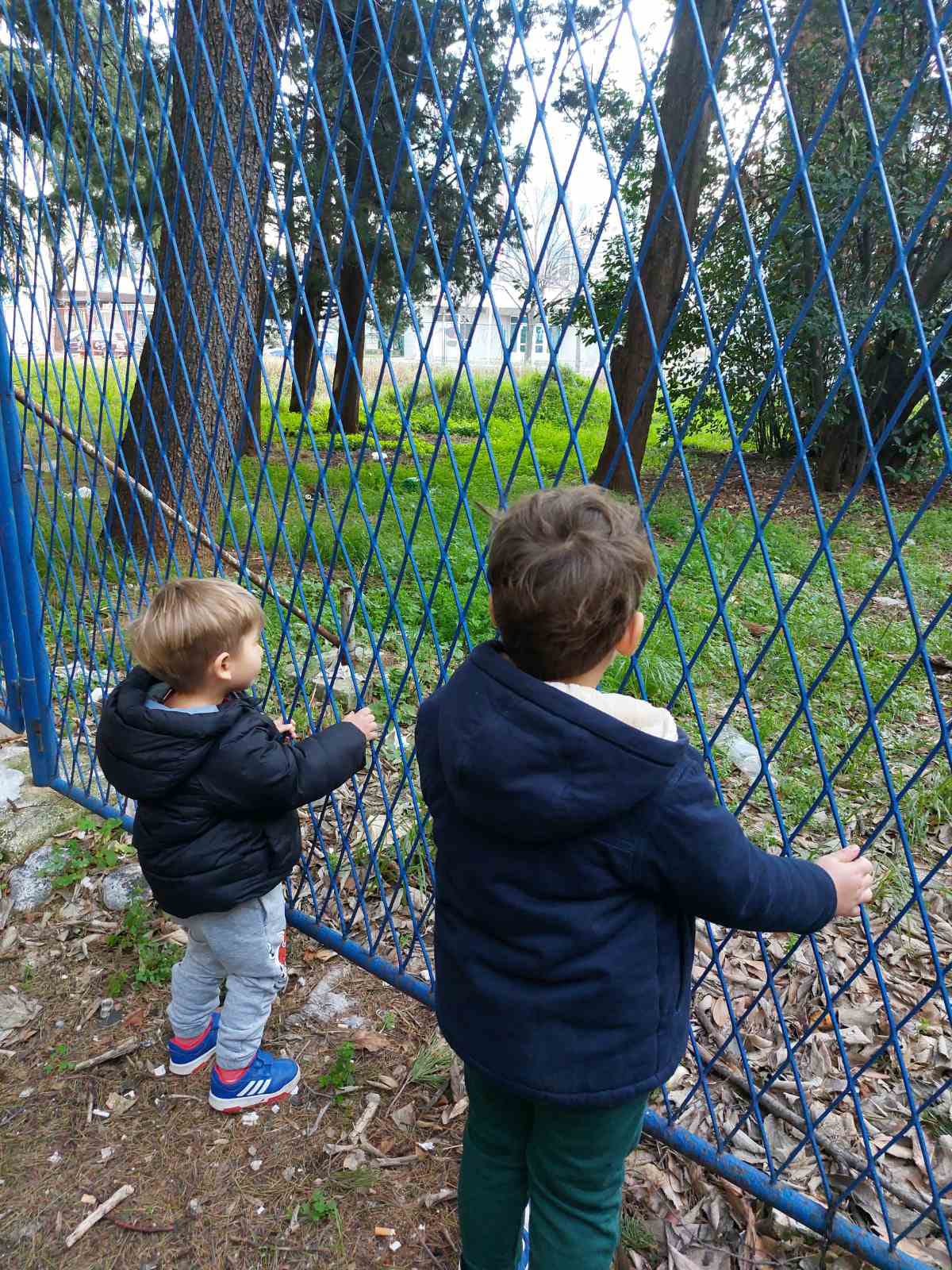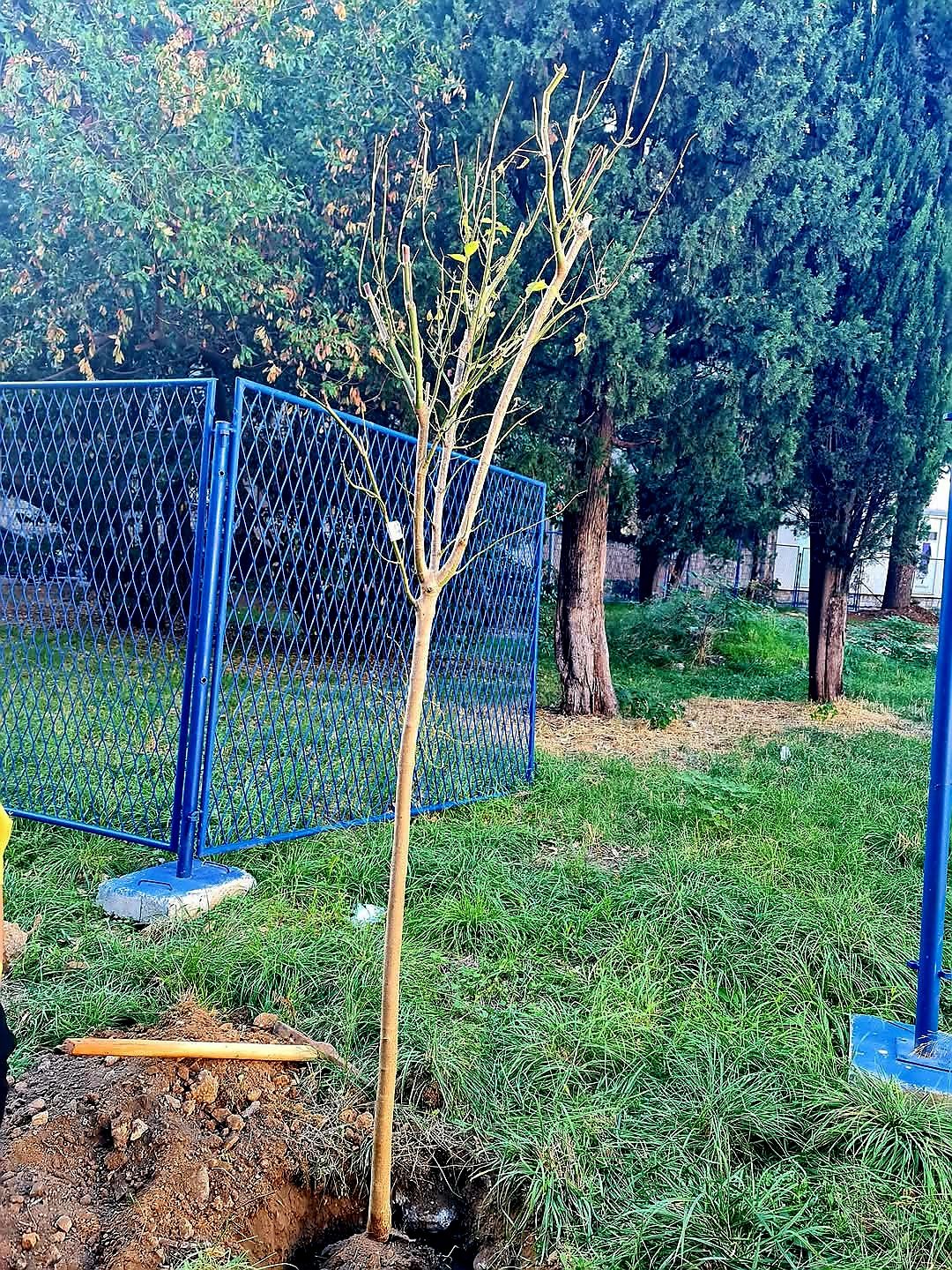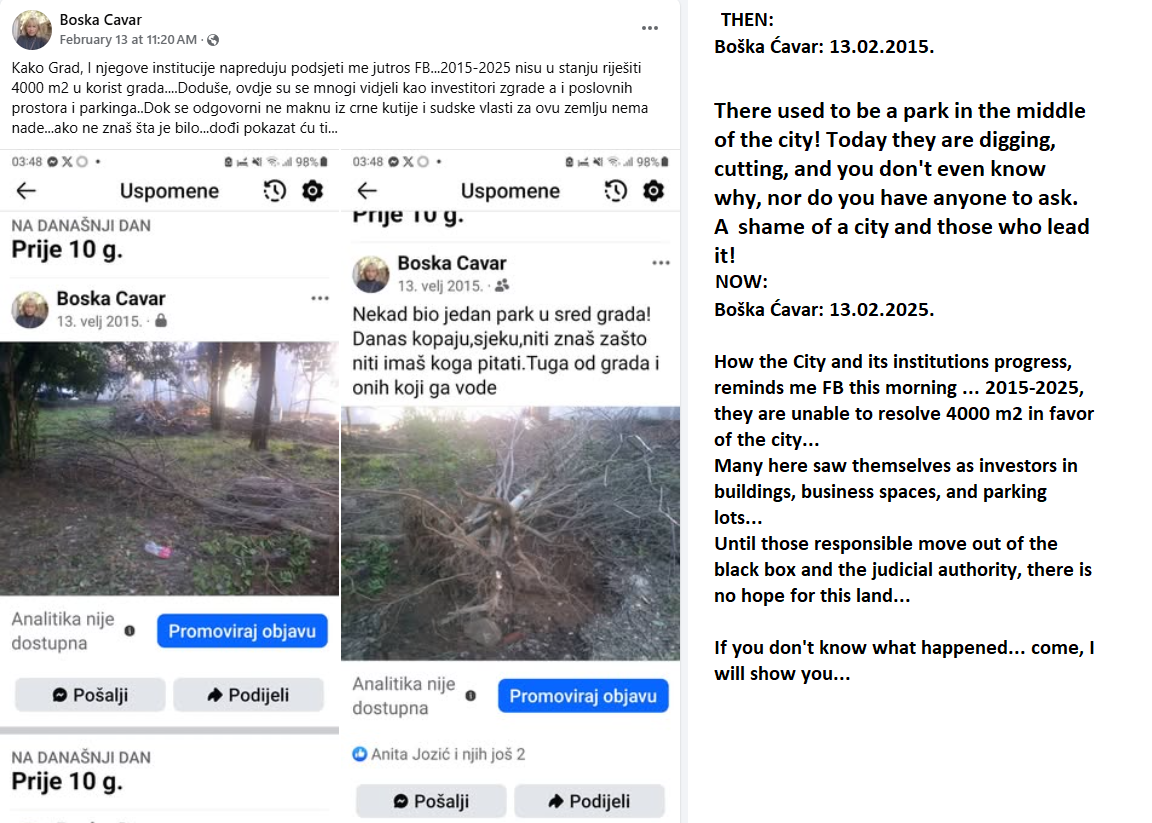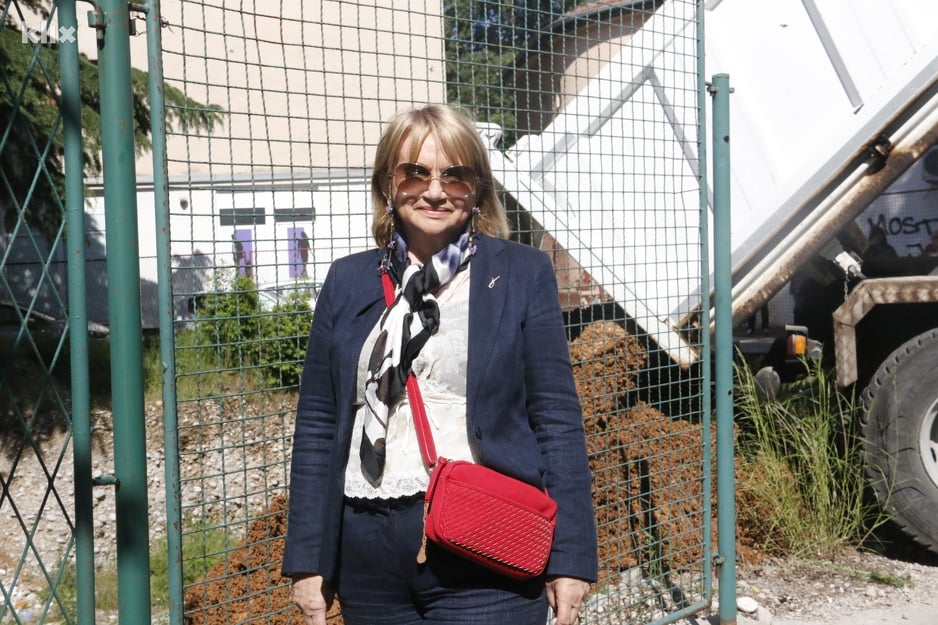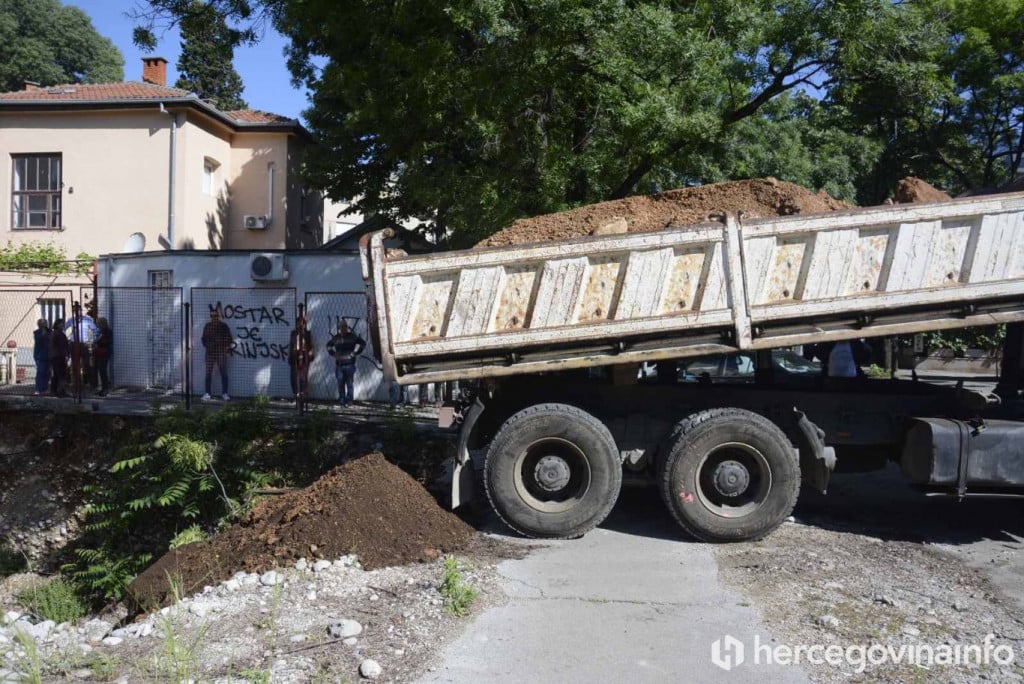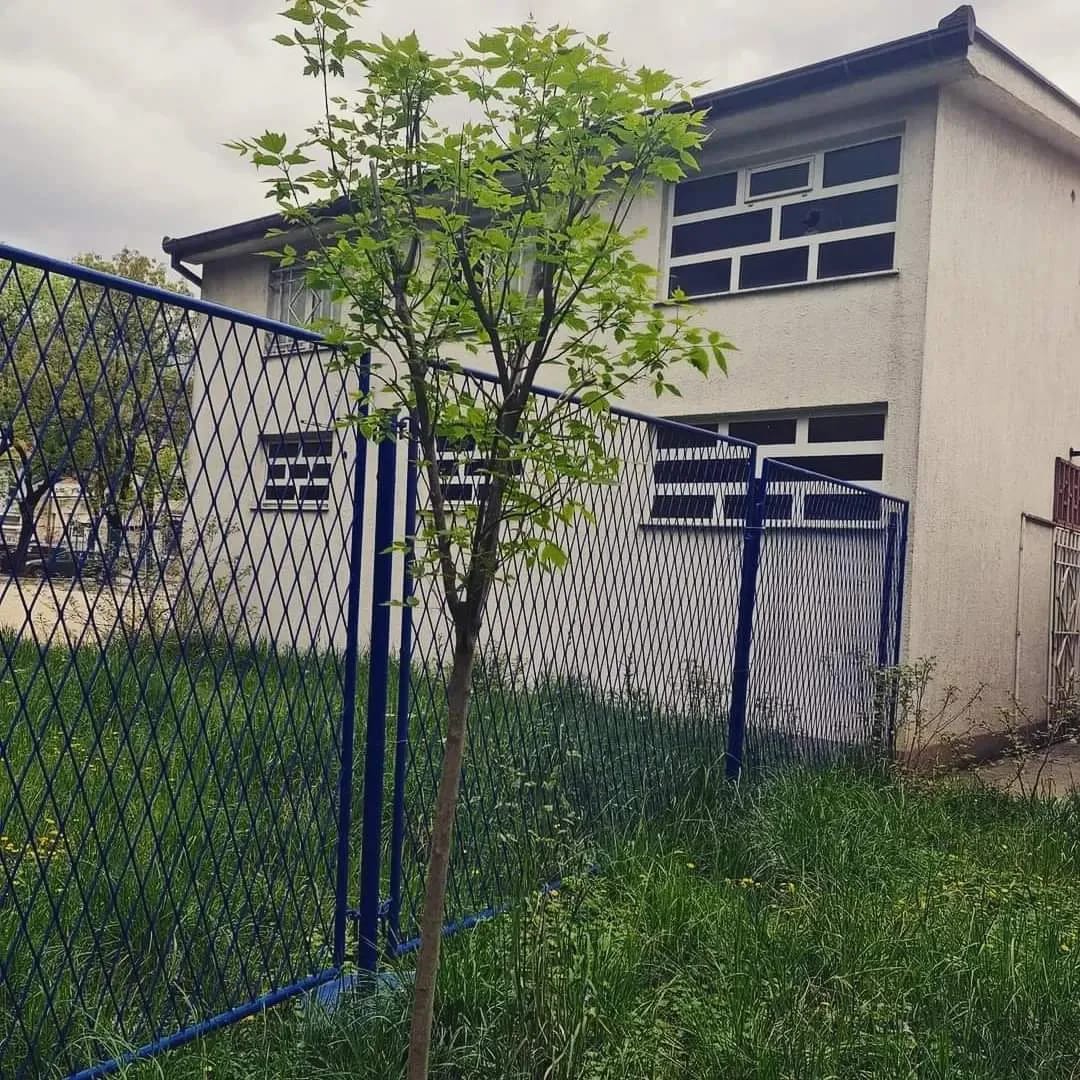Prioritising the places and people that need it the most
Fight for the greenyard - source of life
The Struggle of the Individual to preserve the green spaces - Have we hit the bottom as a society?
A construction hole in kneza Domagoja street in Mostar, which is a witness to illegal construction against which Mostar resident Boška Ćavar legally fought, despite the investor's attempt to legalize it, is finally being filled. However, the investor puts up a fence and the tenants of the two surrounding buildings lose their right to access the greenyard. This green area served the citizens for everyday use. Currently, Boška is fighting a legal battle through the courts to return the green area.
Bosnia and Herzegovina
Local
Mostar
Mainly urban
It refers to other types of transformations (soft investment)
Yes
2024-12-23
No
No
Yes
No
Yes
As a representative of an organisation
In many developed societies, it is a given that construction projects can only proceed once all the necessary, valid documents are in place. Unfortunately, this is not the case in some parts of the Western Balkans, where construction begins without the required permits or regulatory oversight. In these areas, excavators often begin digging on non-working days, investors plan developments in areas where construction is prohibited, and institutions allow various omissions or violations of laws.
This lack of accountability creates significant challenges for communities, neighbors, and individuals who are trying to protect their rights and preserve the environment. Boška Ćavar, a resident of Mostar, is at the forefront of this struggle, and this project is her determined effort to address these issues head-on.
The green area at Kneza Domagoja Street, spanning approximately 4000 square meters, is a direct victim of such unregulated urbanization. In response, Boška has not only taken legal action to restore the space but has also envisioned a sustainable future for the area that benefits the community and the environment.
The green space, which had been a beloved resource for the local community, was threatened by illegal construction and the fencing off of the land by the investor. Once the lawsuit reaches a positive resolution, the next phase of the project will focus on the transformation of this green area into a place of beauty, utility, and community connection. The envisioned project will be divided into thematic zones, each serving a specific purpose while promoting sustainability, social engagement, and environmental consciousness.
• Seating Area for Nature Lovers
• Children’s Play Area
• Fountain with Public Access to Water
• Vertical Green Wall for Seedlings
The project is also a testament to the importance of standing up for public rights, showing that individuals and communities can make a real difference.
This lack of accountability creates significant challenges for communities, neighbors, and individuals who are trying to protect their rights and preserve the environment. Boška Ćavar, a resident of Mostar, is at the forefront of this struggle, and this project is her determined effort to address these issues head-on.
The green area at Kneza Domagoja Street, spanning approximately 4000 square meters, is a direct victim of such unregulated urbanization. In response, Boška has not only taken legal action to restore the space but has also envisioned a sustainable future for the area that benefits the community and the environment.
The green space, which had been a beloved resource for the local community, was threatened by illegal construction and the fencing off of the land by the investor. Once the lawsuit reaches a positive resolution, the next phase of the project will focus on the transformation of this green area into a place of beauty, utility, and community connection. The envisioned project will be divided into thematic zones, each serving a specific purpose while promoting sustainability, social engagement, and environmental consciousness.
• Seating Area for Nature Lovers
• Children’s Play Area
• Fountain with Public Access to Water
• Vertical Green Wall for Seedlings
The project is also a testament to the importance of standing up for public rights, showing that individuals and communities can make a real difference.
Stopping excavators in the yard due to illegal construction and starting the fight to preserve the green area that has been used for decades for residents and citizens to rest and play
Daily research and correspondence with the City institutions regarding documents refuting illegal registration (land, cadastre, urban planning, real estate department, etc.). Happiness is short-lived. The investor fences off the space.
The decision that we have to go legally to solve the issue of the yard. Through conversations with architects, urban planners, lawyers, we compile a quality lawsuit.
In the meantime, in Sep/2024 we are forming an Association Sretni građani (happy citizens) that will file a lawsuit together with two other tenants in Dec/2024.
in Jan/2025 we see that Neb Prizes is reopening the project and offering a prize (beautiful, sustainable and together) and we decide to speak about this story.
Our obligation is to preserve nature for the sake of future generations. This project shows one woman's struggle to preserve the greenery in the city and reminds us of what our fundamental rights are. The project gives young people faith that it is worth fighting, that the fight is not in vain. After the lawsuit gets the final epilogue, the next activities are:
- the reconstruction of the yard in terms of planned planting according to the rules of the profession (We want to enjoy nature all year round)
- planned irrigation - smart use of water for the purpose of sustainability
- a small playground for children to play and enjoy,
- a seating area for rest or social bonding with nature lovers (stone benches, natural material only)
- a small, sustainable "vertical wall" where you can come to pick up a seedling or leave yours for others. (Sharing is meaningful in this way, it could be the beginning of a new friendship or an example how others can make something similar in other parts of the town)
- a small fountain in the yard - we all need water, especially on summer days, where temperatures in Mostar exceed 40 degrees Celsius.
Mostar is a tourist city that has drinking water - a web map that shows places of drinking water is a very good move and a service to its citizens and tourists. This network can be displayed publicly on the web, the city's mobile app, tourist brochures, etc. The fountain in our yard can be the first example of such an idea - drinking water that is available to everyone.
- the reconstruction of the yard in terms of planned planting according to the rules of the profession (We want to enjoy nature all year round)
- planned irrigation - smart use of water for the purpose of sustainability
- a small playground for children to play and enjoy,
- a seating area for rest or social bonding with nature lovers (stone benches, natural material only)
- a small, sustainable "vertical wall" where you can come to pick up a seedling or leave yours for others. (Sharing is meaningful in this way, it could be the beginning of a new friendship or an example how others can make something similar in other parts of the town)
- a small fountain in the yard - we all need water, especially on summer days, where temperatures in Mostar exceed 40 degrees Celsius.
Mostar is a tourist city that has drinking water - a web map that shows places of drinking water is a very good move and a service to its citizens and tourists. This network can be displayed publicly on the web, the city's mobile app, tourist brochures, etc. The fountain in our yard can be the first example of such an idea - drinking water that is available to everyone.
In civilized societies, it is incomprehensible that you can start construction if you do not have all the relevant, valid documents. Unfortunately, this is not the case in some parts od Western Balcans. Where excavators start diging on non-working days, where investors plan to build in places where it is not allowed, where institutions allow omissions.
These are all challenges that the community, neighbors, or in this case, an individual, must contend with.
For these reasons, special attention in this project is urgently needed, whether it is the recognition of the effort for what has been done so far or the opportunity to arrange a green area when the initiated lawsuit receives its positive outcome.
It is a green area of approx. 4000 square meters, which in its nature would be divided into thematic zones. One would be a seating area on stone benches for nature lovers, another part for a children's yard, a third part a fountain (irrigation of greenery is implied) so that everyone can drink water on hot summer days, and a vertical green wall for seedlings. You can take or bring yours to make sharing meaningful. The trees that have not yet been cut down by the investors we would try to preserve and plant new ones, with the help of renowned names from the profession who would give its contribution to the sustainability of the project.
These are all challenges that the community, neighbors, or in this case, an individual, must contend with.
For these reasons, special attention in this project is urgently needed, whether it is the recognition of the effort for what has been done so far or the opportunity to arrange a green area when the initiated lawsuit receives its positive outcome.
It is a green area of approx. 4000 square meters, which in its nature would be divided into thematic zones. One would be a seating area on stone benches for nature lovers, another part for a children's yard, a third part a fountain (irrigation of greenery is implied) so that everyone can drink water on hot summer days, and a vertical green wall for seedlings. You can take or bring yours to make sharing meaningful. The trees that have not yet been cut down by the investors we would try to preserve and plant new ones, with the help of renowned names from the profession who would give its contribution to the sustainability of the project.
This concept therefore shows how the physical transformation of a damaged city district can contribute in several ways: it gives hope to young people that they must fight to preserve green spaces; show the authorities that they should stand behind their citizens, not the interests of investors; A landscaped area is a place where all generations can enjoy together (the elderly population and people who have mobility difficulties, children, nature and flower lovers, tourists, random passers-by, etc.)
Their direct connection to the green space and their understanding of its importance for their daily lives motivated them to get involved. By joining forces, we formed a united front to advocate for the preservation of this shared space. The voice of Boška was crucial in raising awareness about the issue. Very important information, Boška won a four-year term in the Mostar City Council. This engagement helped her to publicly seek explanations for the fenced yard, but also to fight for the interests of the public. Information is available on her FB account. Employees from various institutions also played a key role in the project, particularly in assisting with the acquisition of necessary documentation. Recognizing the potential for long-term impact, we decided to formalize our efforts by founding an association. This new organization is named Sretni građani (Happy citizens) and is dedicated to addressing issues related to real estate, environmental protection, and the safeguarding of fundamental human rights. The association’s goals are not only to protect existing green spaces but also to prevent similar issues from arising in the future, fostering a sustainable and rights-respecting approach to urban development in Mostar. The project also benefited from the involvement of urban planners, architects, and lawyers, whose expertise was instrumental in shaping the project’s strategy. Urban planners and architects contributed to the design and reconstruction plans for the green space, ensuring that it would be both functional and sustainable. Lawyers helped craft a solid legal case, leading to the filing of a lawsuit that is currently pending, awaiting its final resolution. The lawsuit was sent to the court on 23.12.2024 and we consider that date as the date when we finished out project. We expect the institutions to do their part of the job so that the project has its full meaning.
While the project was primarily local in scope, each stakeholder’s involvement at different levels played an essential role. Boška Ćavar, as an active member of the local community, used her position as a member of the Mostar City Council to seek official explanations regarding the fenced yard and push for transparency and accountability from the institutions. Her role was key in raising awareness and creating public support for the cause. Local institutions, including city planning departments, were instrumental in providing necessary documentation and assisting with procedural matters. Their role was more passive but still important. Urban planners and architects brought their professional expertise to ensure the design of the green space was not only functional but also sustainable. They worked on the redevelopment plans, ensuring that the space would serve the community's needs for years to come.
Urban planners and architects were essential in shaping the overall design of the green space. They worked to create a functional layout that would serve the needs of the community while ensuring sustainability and aesthetic appeal. Their work focused on the zoning of the space (e.g., seating areas, children's playground, vertical garden) and the selection of materials, ensuring that the design was both practical and environmentally sustainable.
Advice from dendrologists, Senior Expert Associate and biologists for Green Areas were crucial in selecting plant species, designing an irrigation system, and implementing energy-efficient and water-conserving strategies.
The role of lawyers and architects was crucial in clarifying the legal complexities surrounding ownership and real rights, which ultimately contributed to the preparation of a well-founded lawsuit.
The neighbors of the surrounding buildings were instrumental in all phases of the project. They actively participated in gathering documentation, communicating with local institutions, and were foundational in establishing the Happy Citizens Association. As the association's founders, they played a key role in organizing and ensuring that the community’s voice was heard. Their engagement extended to participating in meetings with the lawyer and architect, offering valuable input throughout the legal process. Their collective efforts culminated in the preparation of the lawsuit, which represents the final and critical step in the project’s journey.
Advice from dendrologists, Senior Expert Associate and biologists for Green Areas were crucial in selecting plant species, designing an irrigation system, and implementing energy-efficient and water-conserving strategies.
The role of lawyers and architects was crucial in clarifying the legal complexities surrounding ownership and real rights, which ultimately contributed to the preparation of a well-founded lawsuit.
The neighbors of the surrounding buildings were instrumental in all phases of the project. They actively participated in gathering documentation, communicating with local institutions, and were foundational in establishing the Happy Citizens Association. As the association's founders, they played a key role in organizing and ensuring that the community’s voice was heard. Their engagement extended to participating in meetings with the lawyer and architect, offering valuable input throughout the legal process. Their collective efforts culminated in the preparation of the lawsuit, which represents the final and critical step in the project’s journey.
One of the most innovative aspects of this project is the community-driven legal advocacy led by Boška Ćavar and the local residents. In an era where private investors often prioritize profit over public interests, the active involvement of residents in fighting for the preservation of their green space is exceptional. The collaboration between diverse disciplines—including urban planning, architecture, environmental science, and law—is another innovative feature of the project. While mainstream urban projects often overlook the social aspect of public space, this project places significant emphasis on community participation and accessibility.
The Happy Citizens Association, which was created by local residents, ensured that the design and implementation of the green space were truly reflective of the community’s needs. This bottom-up approach stands in contrast to typical projects where decisions are made by external developers or government bodies, often without consulting the people directly affected.
The project’s focus on social inclusivity—through features like seating areas for social bonding, a children’s playground, and the vertical garden for plant sharing—aims to create a space that fosters community connections and serves people of all ages and backgrounds. In comparison to mainstream approaches, this project is remarkably innovative because it integrates legal activism, environmental design, and social inclusivity into one cohesive urban space. It shows how citizens can play a central role in shaping the future of their cities, and how green spaces can be designed not only to beautify but also to empower and unite communities.
The Happy Citizens Association, which was created by local residents, ensured that the design and implementation of the green space were truly reflective of the community’s needs. This bottom-up approach stands in contrast to typical projects where decisions are made by external developers or government bodies, often without consulting the people directly affected.
The project’s focus on social inclusivity—through features like seating areas for social bonding, a children’s playground, and the vertical garden for plant sharing—aims to create a space that fosters community connections and serves people of all ages and backgrounds. In comparison to mainstream approaches, this project is remarkably innovative because it integrates legal activism, environmental design, and social inclusivity into one cohesive urban space. It shows how citizens can play a central role in shaping the future of their cities, and how green spaces can be designed not only to beautify but also to empower and unite communities.
The methodology behind this project is deeply rooted in collaboration, community engagement, and sustainable urban design, combining legal advocacy, environmental responsibility, and social inclusivity. The approach was guided by a desire to protect public space, ensure long-term sustainability, and empower the local community.
The neighbors’ involvement in collecting documentation and communicating with local institutions helped to shape the legal arguments in the lawsuit.
The architects and urban planners worked with the neighbors to ensure that the design addressed their concerns and ideas, making the green space something that was both professionally designed and authentically aligned with the community’s needs.
Lawyers provided legal expertise to challenge the illegal fencing and obstruction of the green space. The legal approach involved gathering relevant documentation, analyzing ownership rights, and drafting a well-supported lawsuit that would ensure the preservation of the green space.
The approach used in this project can be described as multidisciplinary, with elements of transdisciplinarity.
The neighbors’ involvement in collecting documentation and communicating with local institutions helped to shape the legal arguments in the lawsuit.
The architects and urban planners worked with the neighbors to ensure that the design addressed their concerns and ideas, making the green space something that was both professionally designed and authentically aligned with the community’s needs.
Lawyers provided legal expertise to challenge the illegal fencing and obstruction of the green space. The legal approach involved gathering relevant documentation, analyzing ownership rights, and drafting a well-supported lawsuit that would ensure the preservation of the green space.
The approach used in this project can be described as multidisciplinary, with elements of transdisciplinarity.
This project holds significant potential for replication in other cities for several key reasons. The fenced yard featured in the project is far from unique. It represents a larger trend where green spaces and communal areas are increasingly at risk of being taken away from the people who rely on them the most. Every city likely has at least one such space—a yard, park, or green area—that is threatened by the desire for profit-driven development, whether it be for a high-rise building, shopping center, or other commercial ventures. These developments often overlook the needs of the community, particularly the importance of accessible natural spaces where people can gather, relax, and reconnect with nature.
By demonstrating how this project successfully mobilized a community to protect its green space, it serves as a model for cities everywhere facing similar challenges. The project is not just about preserving one small yard; it's about advocating for sustainable urban planning that balances development with the rights of residents to enjoy the environment around them.
By demonstrating how this project successfully mobilized a community to protect its green space, it serves as a model for cities everywhere facing similar challenges. The project is not just about preserving one small yard; it's about advocating for sustainable urban planning that balances development with the rights of residents to enjoy the environment around them.
Urbanization and Green Space Loss:
Across the world, urbanization is rapidly increasing, leading to the loss of green spaces, parks, and communal areas. These spaces are vital for mental and physical well-being, yet they are often sacrificed for commercial development.
Climate Change and Environmental Sustainability:
Cities contribute to environmental degradation through increased pollution, reduced green cover, and higher carbon emissions. Green spaces help mitigate some of these issues by improving air quality, providing cooling effects etc.
Human Rights and Access to Public Spaces:
Access to green spaces is increasingly recognized as a fundamental human right, yet in many parts of the world, such access is not guaranteed. The privatization and commercialization of land often deprives people of spaces to enjoy nature, socialize, or simply relax.
The creation of the "Sretni građani" (Happy Citizens) association is an effort to defend the public's right to access green spaces. By legally challenging the fence and advocating for public spaces to be preserved, the project directly contributes to the fight for human rights on a local level, ensuring future generations have access to nature and public spaces.
Across the world, urbanization is rapidly increasing, leading to the loss of green spaces, parks, and communal areas. These spaces are vital for mental and physical well-being, yet they are often sacrificed for commercial development.
Climate Change and Environmental Sustainability:
Cities contribute to environmental degradation through increased pollution, reduced green cover, and higher carbon emissions. Green spaces help mitigate some of these issues by improving air quality, providing cooling effects etc.
Human Rights and Access to Public Spaces:
Access to green spaces is increasingly recognized as a fundamental human right, yet in many parts of the world, such access is not guaranteed. The privatization and commercialization of land often deprives people of spaces to enjoy nature, socialize, or simply relax.
The creation of the "Sretni građani" (Happy Citizens) association is an effort to defend the public's right to access green spaces. By legally challenging the fence and advocating for public spaces to be preserved, the project directly contributes to the fight for human rights on a local level, ensuring future generations have access to nature and public spaces.
Immediate Impact: The green space has been temporarily preserved, as the investor’s construction has been halted due to ongoing legal action.
Through persistent research, communication, and collaboration with experts, we successfully compiled a strong legal case to challenge the illegal actions of the investor.
The formation of the "Sretni građani" association ensures continued advocacy and action on behalf of the public, providing a platform for residents to engage with urban development issues.
The protection of the green space ensures that future generations will have access to green areas so they can enjoy nature, socializing, and improving their quality of life.
The broader community benefits from increased awareness of the importance of preserving public spaces, potentially encouraging similar actions in other neighborhoods or cities.
The lessons learned from this project, including the legal strategy and community mobilization, provide a blueprint that can be applied in other cities and regions facing similar challenges.
Through persistent research, communication, and collaboration with experts, we successfully compiled a strong legal case to challenge the illegal actions of the investor.
The formation of the "Sretni građani" association ensures continued advocacy and action on behalf of the public, providing a platform for residents to engage with urban development issues.
The protection of the green space ensures that future generations will have access to green areas so they can enjoy nature, socializing, and improving their quality of life.
The broader community benefits from increased awareness of the importance of preserving public spaces, potentially encouraging similar actions in other neighborhoods or cities.
The lessons learned from this project, including the legal strategy and community mobilization, provide a blueprint that can be applied in other cities and regions facing similar challenges.

